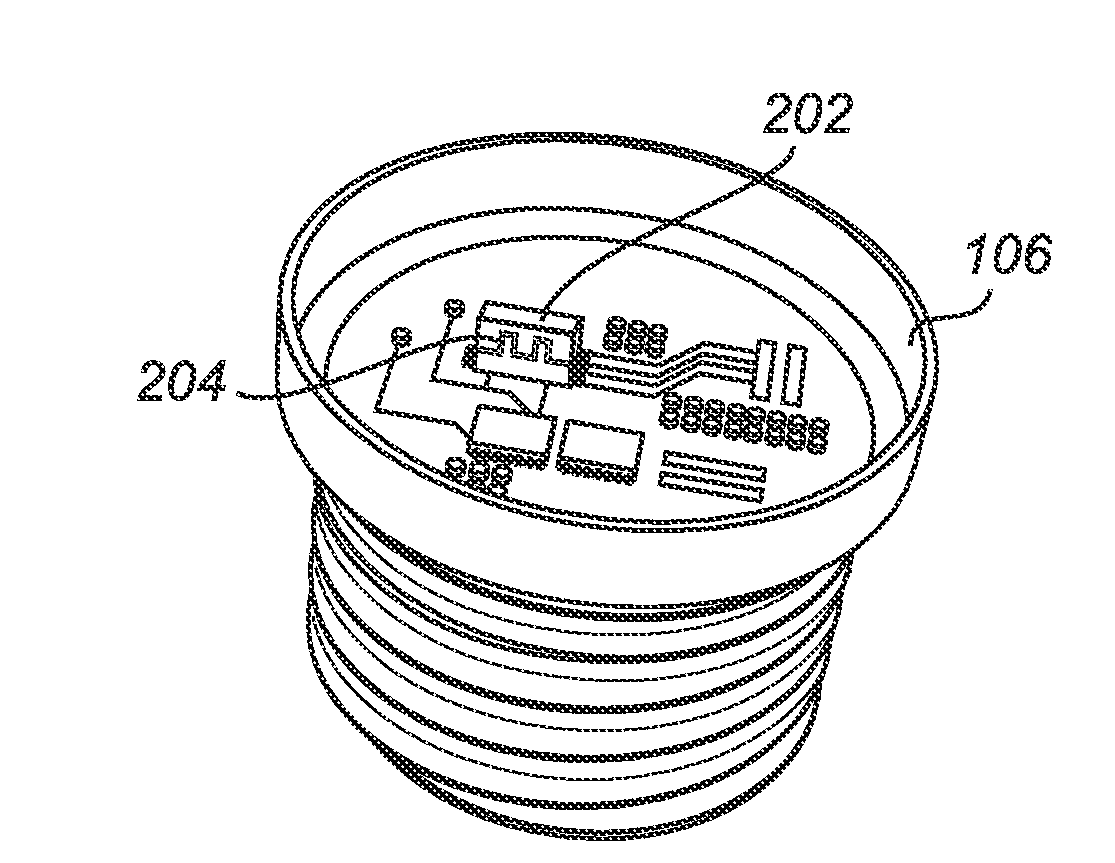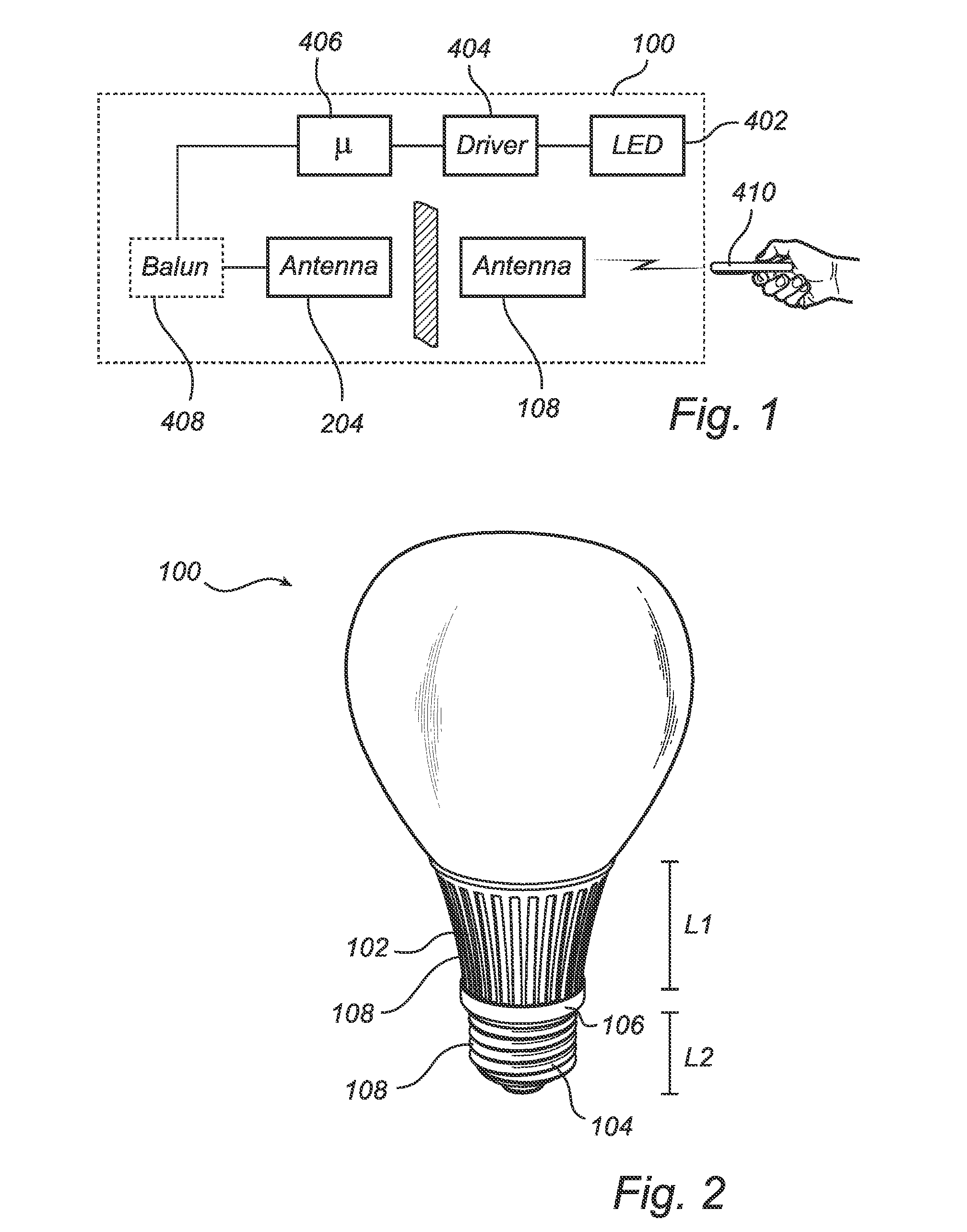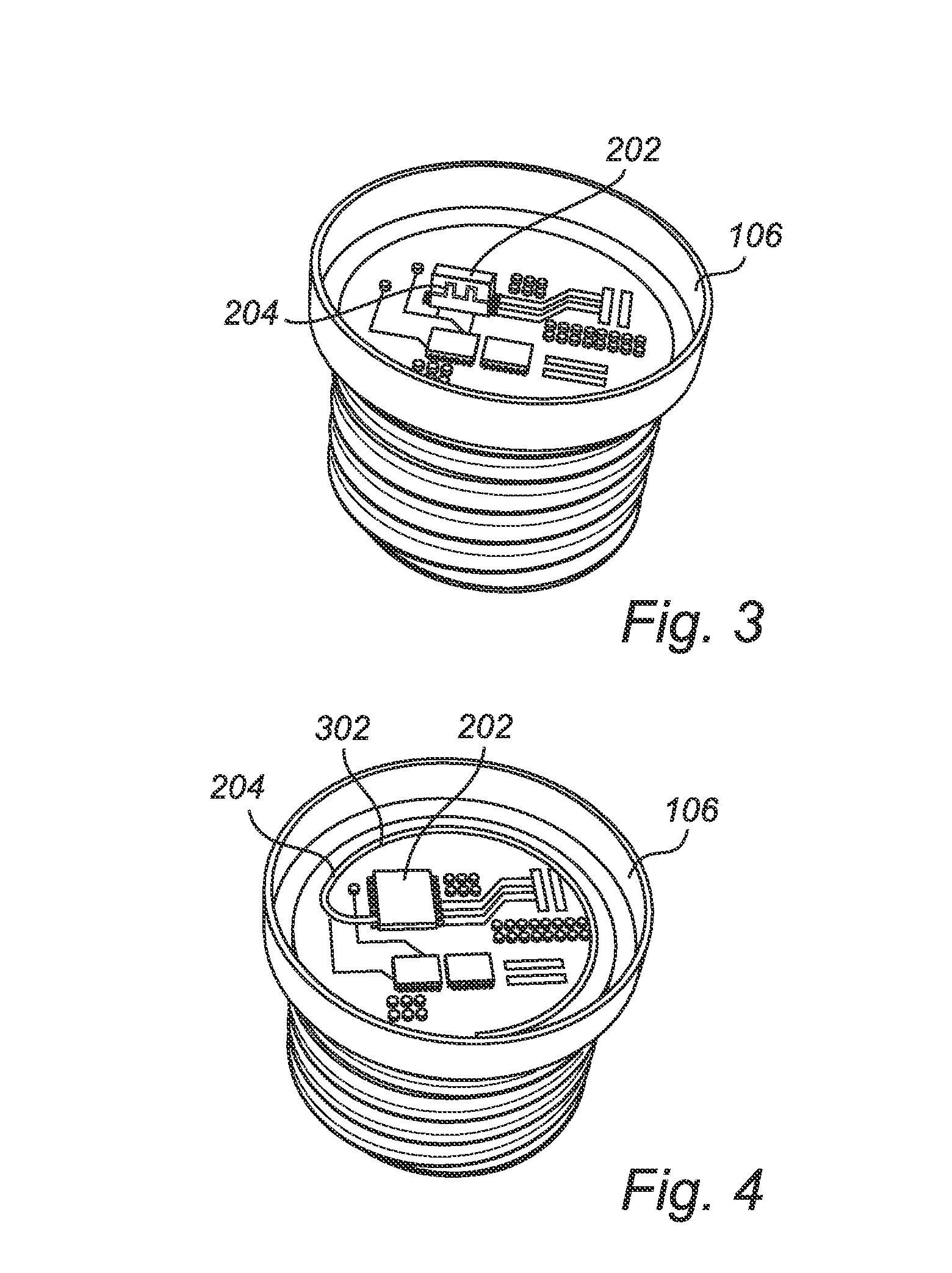Controllable lighting assembly
a technology of lighting assembly and control panel, which is applied in the field of lighting, can solve the problems of affecting the quality of radio communication, mainly dissipating heat generated by leds in a non-lighting direction, and expensive end components, etc., and achieves the effects of broad bandwidth, less sensitive, and broad bandwidth
- Summary
- Abstract
- Description
- Claims
- Application Information
AI Technical Summary
Benefits of technology
Problems solved by technology
Method used
Image
Examples
Embodiment Construction
[0020]The present invention will now be described more fully hereinafter with reference to the accompanying drawings, in which currently preferred embodiments of the invention are shown. This invention may, however, be embodied in many different forms and should not be construed as limited to the embodiments set forth herein; rather, these embodiments are provided for thoroughness and completeness, and fully convey the scope of the invention to the skilled addressee. Like reference characters refer to like elements throughout.
[0021]Referring now to the drawings and to FIG. 1 in particular, there is depicted an embodiment of a general concept for a lighting assembly 100 according to the present invention. In more detail, FIG. 1 illustrates a block diagram of a schematic circuit for wireless radio frequency control of the lighting assembly 100. As is depicted in FIG. 1, at least one light source 402 is connected to a driver 404 for electrically connecting the at least one light source...
PUM
 Login to View More
Login to View More Abstract
Description
Claims
Application Information
 Login to View More
Login to View More - R&D
- Intellectual Property
- Life Sciences
- Materials
- Tech Scout
- Unparalleled Data Quality
- Higher Quality Content
- 60% Fewer Hallucinations
Browse by: Latest US Patents, China's latest patents, Technical Efficacy Thesaurus, Application Domain, Technology Topic, Popular Technical Reports.
© 2025 PatSnap. All rights reserved.Legal|Privacy policy|Modern Slavery Act Transparency Statement|Sitemap|About US| Contact US: help@patsnap.com



